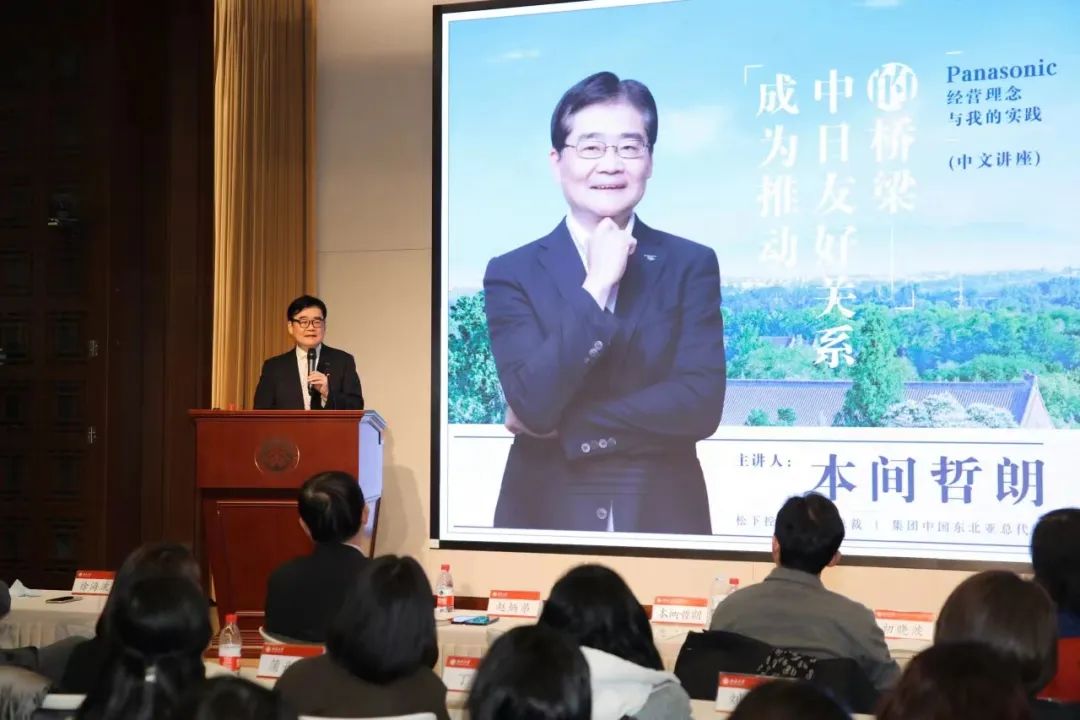
Tetsuro Homma, executive vice president of the Panasonic Group, speaks at a forum at Peking University in Beijing in March. Photo from WeChat account “北京大学日语系”
Japanese electronics giant Panasonic is planning to ante up investment in Shenzhen with potential collaborations in the fields of hydrogen fuel cells, new energy vehicle (NEV) components, and elder care.Shenzhen Executive Vice Mayor Tao Yongxin warmly received Tetsuro Homma, executive vice president of Panasonic Group and president of the Japanese Chamber of Commerce and Industry in China, at a meeting in Shenzhen yesterday.The meeting came after Homma’s visit to Shenzhen in July 2023, when he led a delegation of senior executives from the chamber’s member companies to explore opportunities and met with Shenzhen Party chief Meng Fanli.Tao expressed his desire to deepen the relationship with Panasonic Group and extend practical cooperation into various fields. He affirmed that Shenzhen is committed to providing an internationalized, market-oriented, law-based, and first-class business environment in which Panasonic and other enterprises can thrive.Expressing gratitude for Shenzhen’s ongoing support, Homma commended the city’s open and innovative atmosphere and conveyed his hope for further collaboration in new energy, automotive parts, and elder care. He hoped to foster mutual development by encouraging more Japanese enterprises to invest and grow in Shenzhen.“Shenzhen is the most innovative and dynamic city,” said Homma, recalling his frequent visits to the city between 1994 and 1999.Homma highlighted the successful partnership between Panasonic and Shenzhen company SmartMore in advancing AI applications in industrial testing.He also lauded Shenzhen’s BTR New Material Group for its exceptional product quality and robust supply chain management — both of which have been instrumental in reducing costs and enhancing the performance of Panasonic’s lithium batteries. The two companies have cooperated with each other for 14 years.“We also hope to contribute our share to the ‘silver economy’ amid Shenzhen’s high-quality growth,” Homma said. Additionally, Homma expressed hope for establishing a new material R&D center or a new manufacturing base in Shenzhen.Panasonic’s entry into the Chinese market dates back to 1978. Today, Panasonic’s presence in China encompasses 64 corporate entities that employ approximately 50,000 people, including nearly 10,000 R&D professionals, Homma said.One of Panasonic’s three key business operations in China, NEV components, has established a robust network of 18 manufacturing bases and six R&D bases, according to Homma.WeChat Editors/Cynthia, Cao Zhen

